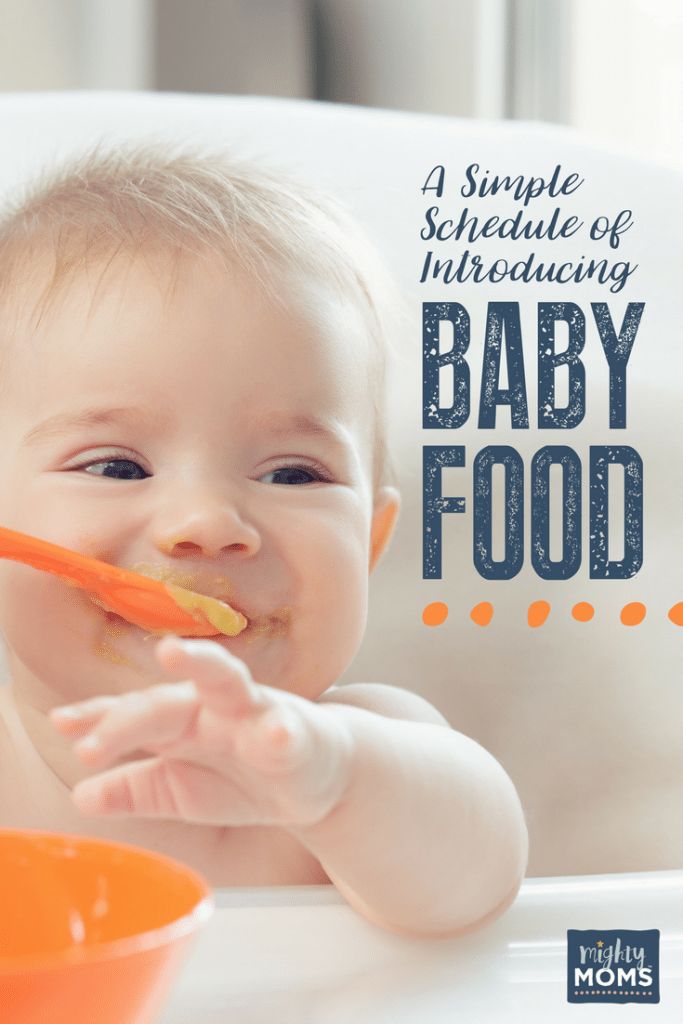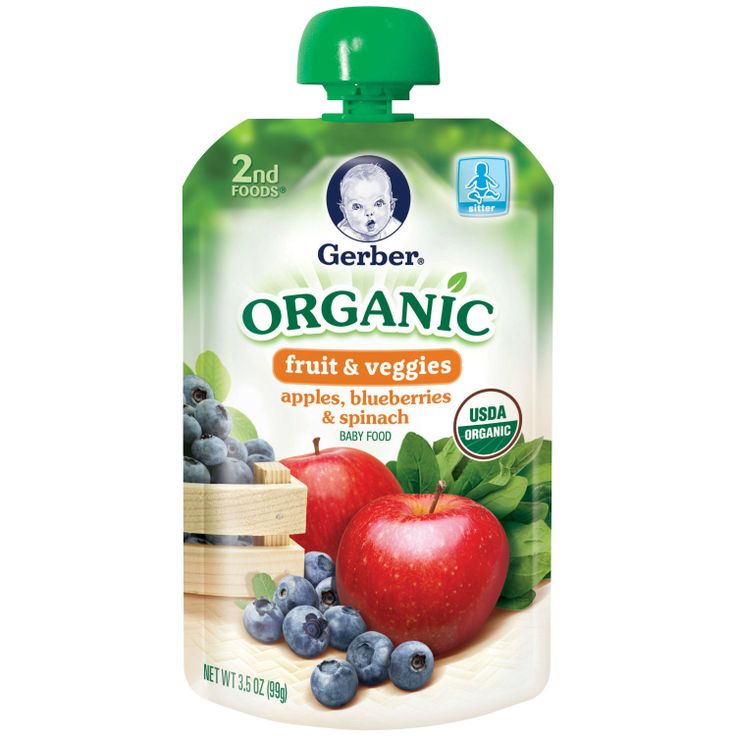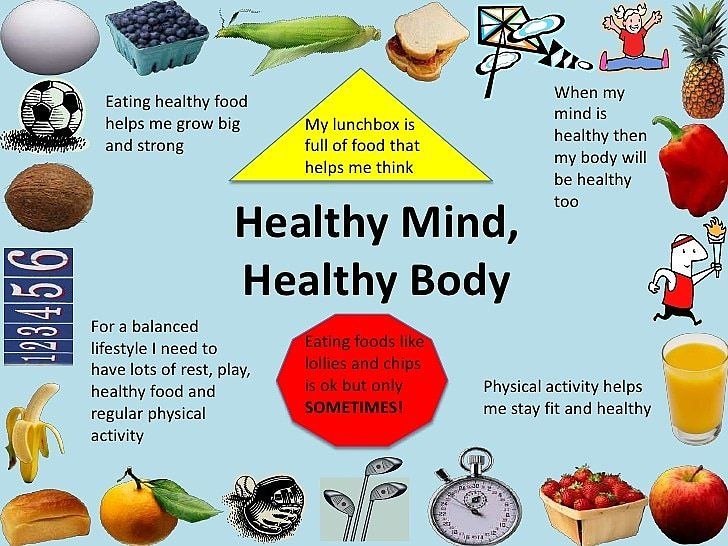How to heat frozen baby food cubes
Heating and Thawing Homemade Baby Food Purees
What is the Best Way to Heat or Thaw Homemade Baby Food Cubes?
There are many ways to heat and thaw homemade baby food. On this page we will tell you all about heating and thawing your homemade baby food cubes.
Thawing and Heating of Homemade Baby Food
When thawing or heating baby food cubes, take out as many cubes that you will feed your baby for 1 or 2 days. Remember to thaw only the amount of food that you will use in a period of 1-3 days as you should not refreeze any leftover food.
Transfer the cubes to a storage container and let the cubes thaw in the refrigerator or you may wish to transfer the cubes to a glass bowl and then thaw them in the microwave. We’ll discuss the various methods of heating and thawing homemade baby food below. Whatever method you choose, please do be sure to always test the temperature of the foods you will be feeding your baby!
Heating Homemade Baby Food
Microwave Heating
Many parents love the ease and convenience of the microwave for both heating and thawing homemade baby food. Whether or not you use the microwave to heat or thaw your homemade baby food is a decision only you can make.
To heat the baby food in the microwave, always transfer the amount of food you will be heating to a glass microwave safe container. You should not use plastic to heat foods in the mircowave. Heat the food in 15 second increments and stir after each heating. When the food has reached the temperature you desire, be sure to give one final stir so that no hot pockets are left to burn baby’s mouth.
Stove Top Heating of Homemade Baby Food
When heating baby food on the stove top, choose a smaller saucepan and place the food into the sauce pan. Gently heat the food using a low setting. Using the lower heat setting will ensure that you do not burn the food.
Do NOT store leftover food from a container that your baby has been eating from. Saliva will contaminate the food and storing leftovers may cause food poisoning.
Microwave Thawing of Homemade Baby Food
Always warm baby food cubes in a glass bowl and not in plastic containers as researchindicates glass is safer. If you are using a microwave to thaw or reheat baby food cubes, be sure to stir food to ensure no hot-pockets are left to burn baby.
If you are using a microwave to thaw or reheat baby food cubes, be sure to stir food to ensure no hot-pockets are left to burn baby.
Many parents do not like to use the microwave for a variety of reasons. It is up to you to decide if heating or thawing your baby food cubes in the microwave is right for you and your baby. If you do not wish to use a microwave to thaw your baby food cubes, you may thaw your baby food cubes in the refrigerator over night (ensure that the cubes remain a closed container and not in an uncovered bowl) as mentioned.
Refrigerator Thawing of Homemade Baby Food Cubes
Thawing baby food cubes in the refrigerator will take longer than using a microwave or the floating/submersion method. You may thaw your baby food cubes in the refrigerator over night (ensure that the cubes remain a closed container and not in an uncovered bowl). This method may take up to 12 hours so do be sure to plan accordingly!
Submersion or Warm Water Thawing of Baby Food Cubes
Thawing baby food cubes using this “submersion method” should take between 10-20 minutes.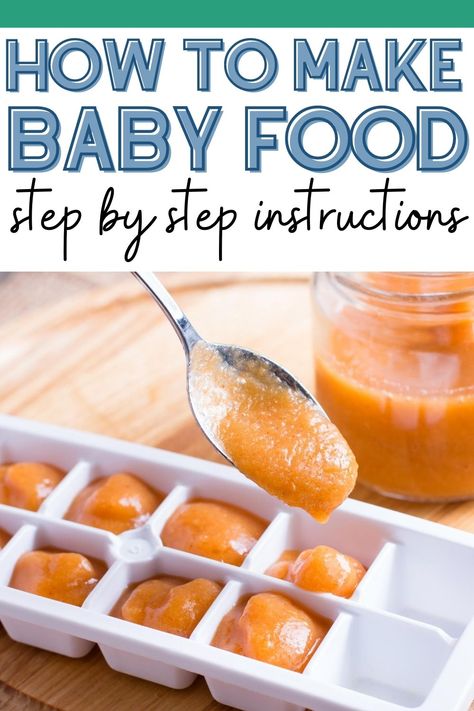 You may place the cubes in a small bowl and then place the bowl in a larger bowl filled with hot water. You can also do this with a pan of warm water on the stove; add the smaller bowl to a pot of water that you have warmed.
You may place the cubes in a small bowl and then place the bowl in a larger bowl filled with hot water. You can also do this with a pan of warm water on the stove; add the smaller bowl to a pot of water that you have warmed.
Thawing food on your kitchen counter is never recommended as bacteria or other contaminants may get into the food.
You should not feed your baby from the container and then re-store the container that baby has been fed from. Saliva may contaminate the food and bacteria may evolve. Always take the portions you will serve from the container and transfer to a feeding bowl.
Please keep in mind that reheating and serving baby food cubes is warm is NOT necessary. Baby food cubes may be served at room temperature once they have been thawed and then heated.. Many babies enjoy room temperature foods.
How Long is it Safe to Keep Thawed Baby Food in the Refrigerator
Thawed homemade baby food is just like other food that you have cooked, frozen and then thawed. The homemade baby food that you have thawed may safely be kept in the refrigerator for 72 hours maximum. Ensure that the thawed baby food is kept in a sealed container to avoid contamination.
The homemade baby food that you have thawed may safely be kept in the refrigerator for 72 hours maximum. Ensure that the thawed baby food is kept in a sealed container to avoid contamination.
Remember, always consult with your pediatrician regarding introducing solid foods to your baby and specifically discuss any foods that may pose allergy risks for your baby.
This site complies with the HONcode standard for trustworthy health information:
verify here.
SHARE ON FACEBOOK SHARE ON PINTEREST
Tips for Making, Storing, and Thawing Baby Food At Home – Square Baby
Katie Thomson MS, RD | Cofounder
How long can you freeze homemade baby food?
- You can store baby food in the freezer for up to six months.
- I recommend storing in an airtight container with minimal air or headspace.
- For optimal taste, quality and nutrient retention, consume frozen baby food within 1-3 months.

How should you defrost/heat homemade baby food?
- The best way to thaw baby food is to put tomorrow’s food in the fridge and let it thaw overnight.
- You can also use the microwave on the “defrost setting” if your baby food is in a microwave-safe dish.
- Remember, food that has been thawed should never be frozen again.
- Once thawed, keep refrigerated and consume within 2 days.
What's the best way to prep homemade baby food?
Food safety is of utmost importance. Before getting started:
- Wash your hands thoroughly.
- Scrub all working surfaces & equipment with antibacterial soap and hot water
Food Preparation Tips:
- Fresh fruits and vegetables should be scrubbed, peeled (as appropriate), and removed of any seeds that could pose a choking hazard.
- Meats and Proteins: remove bones, skin, connective tissue, and gristle.

Cooking Tips:
- If boiling, use a small, covered saucepan with a small amount of water until tender. The less water used, the more nutrients retained in the food.
- Puree food using a blender, food processor, baby food grinder, spoon or fork.
- Add a liquid such as breastmilk, infant formula, bone broth, yogurt, or water to achieve a desired consistency.
How should you store homemade baby food?
There are a couple options for freezing baby food:
- ICE CUBE TRAYS: scoop pureed baby food into clean ice cube trays, cover them with plastic, and stack them in the freezer. Ice cube trays are ideal for creating individual, 1-ounce servings so less food goes to waste. And you can mix & match 1-oz cubes for variety.
- Put frozen cubes in freezer bags. This frees up the trays to make your next batch. As long as the cubes remain thoroughly frozen, they won’t stick together in the bag.

- 2-4 OZ CONTAINERS: There are several options in stores or online. Look for containers with a resealable lid. Microwave, dishwasher, and freezer-safe is most preferred.
Once thawed, how long does homemade baby food last?
- Once thawed, keep refrigerated and consume within 2 days.
- Always throw away any leftovers in which the baby’s spoon has dipped. Bacteria is introduced when you put a licked spoon back into a container.
- If your baby is not going to eat a full container, portion out what you think he or she will eat into a separate container and then serve. The extra thawed food can be stored in a sealed container in the refrigerator for up to two days from the date it was thawed.
Square Baby's Story & Mission
100% Daily Nutrition. 0% Effort in the Kitchen.
I’m Katie Thomson -- a mom of 2 boys and a Registered Dietitian with a Masters in Nutrition. I’ve spent 15 years in the food industry leading health and wellness initiatives and consulting for brands like Starbucks, Red Robin, and Naturebox.
I’ve spent 15 years in the food industry leading health and wellness initiatives and consulting for brands like Starbucks, Red Robin, and Naturebox.
My badass cofounder, Kendall Glynn, is a mom of 3 and Certified Genetic Counselor with a Masters in Biophysics and Molecular Genetics. She spent her career in perinatal services and family planning. She was part of the leadership team at CPMC in San Francisco, launched San Francisco Perinatal Associates (SFPA), the first private, full-service perinatal center in SF. Since leaving SFPA, she has been actively involved in philanthropy for both Children’s Hospital Oakland and George Mark Children’s House raising millions for these two worthy causes.
We created Square Baby® to solve for every pain point we had when feeding our kiddos. We were disappointed with the options on the market — often unbalanced, misleadingly marketed, and a sea of uninspiring, shelf-stable, muted flavors.
We didn't want the next generation of babies growing up on so. much. applesauce. PSA: did you know many baby food pouches have the same grams of sugar as a bowl of LUCKY CHARMS? Mind. Blown.
much. applesauce. PSA: did you know many baby food pouches have the same grams of sugar as a bowl of LUCKY CHARMS? Mind. Blown.
Babies deserve better.
Our handmade meals are made with whole, organic foods — gently cooked, pureed in small batches, quickly frozen, and delivered right to your doorstep. Just like homemade, but better!
With my Dietitian hat on, I created the Square Meal System™ — where every Square Meal is perfectly BALANCED with organic veggies, fruits, whole or sprouted grains, and various protein sources. We even add healthy fats, herbs and spices for optimal nutrition and palate development. Balance is in the numbers! Our meals have HALF THE SUGAR as most pouches!
Our foolproof, interchangeable system means that ANY 2-3 Square Meals per day offers 100% Daily Nutrition! Our meal plans are customizable -- vegan? dairy-free? vegetarian? meat-eaters? looking for extra iron or omega-3's?
We got you!
And most importantly, we are the ONLY fresh baby food company offering an allergen introduction menu for several of the top allergens including milk, egg, wheat, soy, sesame, fish, tree nuts, and peanuts!
That’s right!
As a science-based company, we are following the research and offering options like Peanut Pumpkin Pie, Coconut Shrimp Fried Rice, Almond Butter & Banana, and Salmon Mash.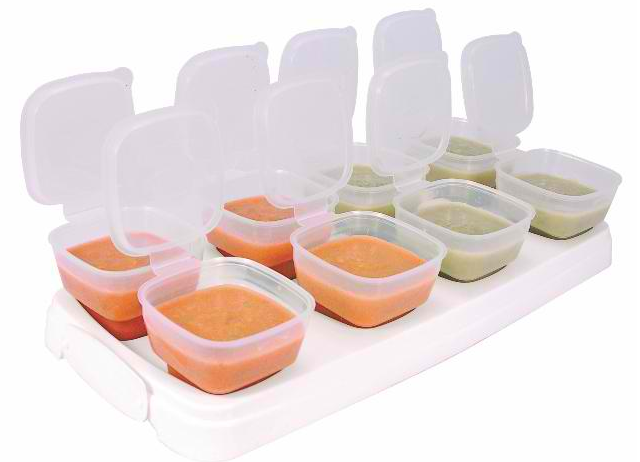 Because research has shown that introducing babies to allergenic foods early and often may help prevent food allergies from developing by up to 80%!
Because research has shown that introducing babies to allergenic foods early and often may help prevent food allergies from developing by up to 80%!
Follow us on Instagram @squarebabyfood or reach out with any questions to [email protected] -- we're so happy to help!
Whether you prefer to make your own baby food, or need a little help -- we're here to support and cheer you on.
xo, Katie & Kendall
This blog post is for information purposes only and shouldn’t be used as personal, health, nutritional, or medical advice. Always consult with your pediatrician before making any decisions about your child's health or readiness for various foods.
Never
Miss a Beat
Drop your email for exclusive content & access to special deals
Other Popular Reads
Healthline Names Square Baby "Best Puree Meal Service for Kids"!
View MoreSquare Baby Raises $1.8M to Expand Nationally and Serve Waitlist of 10,000 Families
View MoreFedEx Small Business Grant Contest: Square Baby Named Top 100 Finalist
View More${name} Box
You currently have ${quantity} meal(s) selected out of ${meals}.
Only ${mealsToGo} more to go to complete your box!
You have completed your box!
Almond Butter & Banana
Apple Curry Chicken
Apple Rosemary Lentils
Sold out
Avocado Greens
Sold out
Baby Blues
Sold out
Beet Berry
Sold out
Coconut Shrimp Fried Rice
Greenie Baby
Sold out
Harvest Feast
Sold out
Lil Carrot
Lil Mango
Lil Peach
Lil Pear
Lil Sweet Pea
Sold out
Lil Sweet Potato
Mango Coconut Chicken
Sold out
Mango Rice Pudding
Sold out
Minty Green
Sold out
Peachy Oatmeal
Sold out
Peanut Pumpkin Pie
Sold out
Salmon Mash
Sold out
Spinach Dahl
Turkey Tacos
Veggie Scramble
Choose Meals
${this.quantity}/${this.meals} meals
FILTER BY DIETARY NEEDS+-
Meal Type +-
Dietary Needs +-
Protein Source +-
Benefits +-
Texture +-
Allergen Introduction +-
Almond Butter & Banana
Apple Curry Chicken
Apple Rosemary Lentils
Sold out
Avocado Greens
Sold out
Baby Blues
Sold out
Beet Berry
Sold out
Coconut Shrimp Fried Rice
Greenie Baby
Sold out
Harvest Feast
Sold out
Lil Carrot
Lil Mango
Lil Peach
Lil Pear
Lil Sweet Pea
Sold out
Lil Sweet Potato
Mango Coconut Chicken
Sold out
Mango Rice Pudding
Sold out
Minty Green
Sold out
Peachy Oatmeal
Sold out
Peanut Pumpkin Pie
Sold out
Salmon Mash
Sold out
Spinach Dahl
Turkey Tacos
Veggie Scramble
Defrosting and serving baby food.
 Your baby from birth to two years old Defrosting and serving baby food. Your baby from birth to two years
Your baby from birth to two years old Defrosting and serving baby food. Your baby from birth to two years WikiReading
Your baby from birth to two years old
Sears Marta
Contents
Defrosting and serving baby food
Frozen meals should not be thawed at room temperature for long periods of time. When it's time to use frozen baby food, try these tips:
• For slow defrosting, place one serving or a day's supply in the refrigerator and leave for three to four hours.
• For quick defrosting, use an electric defrost or place a frozen cube or open jar in a heat-resistant small container and place in a small saucepan. Fill the pot with water just short of the rim of the food container. Defrost and reheat over medium heat, stirring occasionally to heat evenly. nine0003
• Before giving baby food to a baby, be sure to mix it thoroughly and taste to make sure there are no areas too hot for the baby.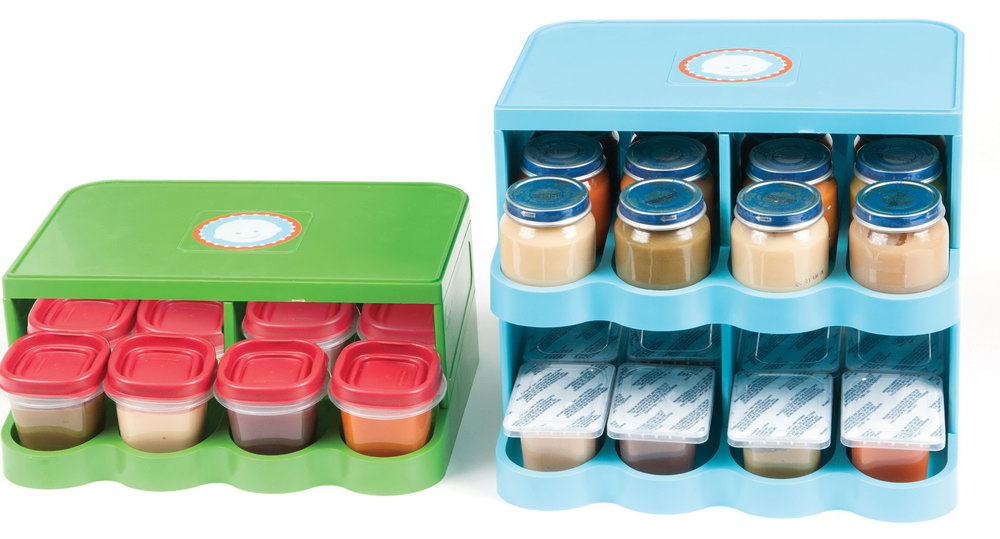 Touch the product with your upper lip each time you load another spoon. Even the smallest amount of food that is too hot can teach a child not to trust what lies in the spoon approaching him. You can better check the temperature with your finger.
Touch the product with your upper lip each time you load another spoon. Even the smallest amount of food that is too hot can teach a child not to trust what lies in the spoon approaching him. You can better check the temperature with your finger.
• Because microwave heating can create hot spots in food that can burn your child's mouth, we do not recommend this method. If you choose a microwave, be very careful to stir and always try a little yourself to see if the food is evenly heated before feeding your baby. nine0003
• To avoid wasting food, feed your baby with a spoon of the portion you think he can handle. If he wants more, use a clean spoon to place the topping on his plate. You can store the rest of the dish in the refrigerator for two days, but only if saliva does not get into it.
Some babies don't eat "baby food" at all, and all this information on how to make it can be skipped if your baby tolerates a fairly firm texture, refuses solid foods for a long time, can't stand being spoon-fed, or transitions immediately to hand feeding.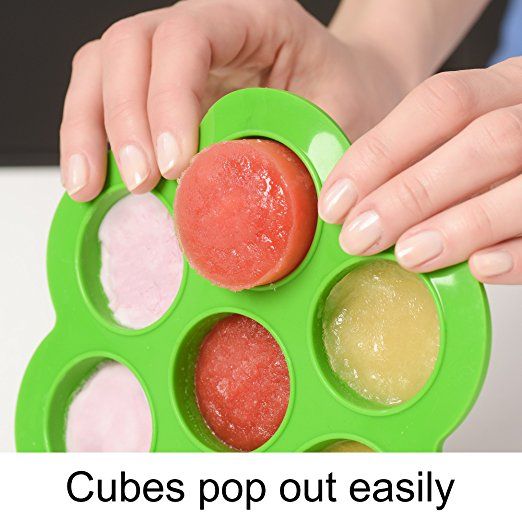 Some mothers really go into making baby food; others simply cook for the whole family and mash a portion for the child with a fork. nine0003
Some mothers really go into making baby food; others simply cook for the whole family and mash a portion for the child with a fork. nine0003
This text is an introductory fragment.
Table and chair
Table and chair Do two exercises with your child and ask him to guess where the chair turned out and where the table turned out. Riddle No. 1: Place your left palm vertically up. From below, put the fist of your right hand with your thumb towards you. (Chair) Riddle #2: Clench your left hand into a fist. Top
Tip 12 More variety, please
Tip 12 More variety on the table, please Almost like adults These adults are strange people - we are with you. We trumpet on all corners that food should be as diverse as possible: only in this way, they say, the body will receive everything it needs. For breakfast we eat one thing, for lunch - another, for dinner
For breakfast we eat one thing, for lunch - another, for dinner
Power mode
nine0002 Diet • Food should be fresh and look appetizing. • It is very important that meals take place at the same time. Then you will be able to ensure a regular supply of nutrients to build the growing tissues of the fetus, uterus, mammary glands, amnioticManufactured baby foods
Industrial baby food products What applies to baby food products of industrial production for children of the first year of life • Canned fruit, vegetable and fruit and vegetable juices and purees. • Dry instant cereals and
Level 3: submission
Level 3: Submission The methods of presenting impromptu speeches are not much different from presenting prepared speeches. At the third level, you will work on gestures, pauses, eye contact, intonation, and other delivery methods. The goal of this level is
The goal of this level is
"To the table!"
"To the table!" The rhythm of the life of a French family is built around this sacred phrase, because the ritual of eating at a common table is the most important moment in learning good manners. It hardly needs to be reminded that the main dishes of French cuisine must be served and tasted
They put him at the table, and he put his feet on the table
They put him at the table, and he put his feet on the table It happens. We just can’t stand it, just to eat. And antics, and fidgeting in a chair, and a pigsty in a plate. Again, let's look into the dining room, where they dine in silence and peace, without quarrels and antics. But here is a two-year-old little girl acting up at the table,
2.3. Round table for teenagers: "How do friendships develop and sometimes break?" nine0030
2. 3. Round table for teenagers: "How do friendships develop and sometimes break?" For modern teenagers, it is more difficult to get to know each other even in the courtyard of the house on the playground than for the previous generation of children. Gone are many traditions of courtyard games, which in
3. Round table for teenagers: "How do friendships develop and sometimes break?" For modern teenagers, it is more difficult to get to know each other even in the courtyard of the house on the playground than for the previous generation of children. Gone are many traditions of courtyard games, which in
Help the nanny set the table
Help the nanny set the table They want to have breakfast in the group, Everyone around is in a hurry to help Carry dishes on the tables. Only the Hedgehog said: - I won't! I won't go, I'll sit And I will look at you! I don't want to help Better to just wait. It's unpleasant for everyone. All Hedgehog
Wash your hands before you sit down to eat
Before you sit down at the table, wash your hands On the birthday of the Frog Her friends gathered. frolicked, played And then they began to have lunch. Only one thing was forgotten: The guests didn't wash their hands! Treats at the tables They took it with dirty hands. And the frog, probably It was
Only one thing was forgotten: The guests didn't wash their hands! Treats at the tables They took it with dirty hands. And the frog, probably It was
Making your own baby food
Making baby food with your own hands Good nutrition, or lack thereof, can have an impact on your child's health and behavior. It's worth spending a couple of hours a week preparing meals for your child. You know what it's made of and you can cook
Packaging and storage of homemade baby food
Packaging and storage of homemade baby food Store your home-cooked meals in the freezer. Allow the food to cool slightly before freezing in small portions. What do you need to make your own baby food? • Kitchen
Freezing Baby Food - Feeding
Making and freezing homemade or store-bought baby food is a way to make sure your baby is getting enough nutrition and can save you a lot of money. However, freezing baby food is not as easy as throwing it into the freezer. If you're going to be freezing baby food, you need to know the basics, like what freezes well, how to freeze portions correctly, and make sure the food stays safe for your baby. nine0003
However, freezing baby food is not as easy as throwing it into the freezer. If you're going to be freezing baby food, you need to know the basics, like what freezes well, how to freeze portions correctly, and make sure the food stays safe for your baby. nine0003
Freezing homemade baby food
Freezing homemade baby food is pretty easy if you know what you are doing. Start by preparing your favorite homemade baby food recipes. Vegetables should always be blanched before mashing and freezing, meat should be cooked before freezing, and fruit can be frozen raw. Once you have prepared baby food, it is relatively easy to freeze it.
- Pour baby food into sterile freezer containers with tight-fitting lids. nine0091
- Allow food to cool to room temperature before placing it in the freezer.
- Never let food stand at room temperature for more than two hours.
- Pictures of Baby Shower Ideas
- Stylish Baby Diaper Bag Options
- 28 Baby Shower Cake Images to Inspire You
Freezing Commercial Baby Food
You can also freeze store bought baby food nutrition. Gerber recommends not freezing baby food because it can impair texture and their packaging is not suitable for freezing. Glass baby food jars can crack in the freezer as food expands and plastic containers are not meant to hold it. According to the USDA, you can freeze almost any food except jarred food, as long as you don't remove it from the jar before freezing, and eggs are in shell. nine0003
Gerber recommends not freezing baby food because it can impair texture and their packaging is not suitable for freezing. Glass baby food jars can crack in the freezer as food expands and plastic containers are not meant to hold it. According to the USDA, you can freeze almost any food except jarred food, as long as you don't remove it from the jar before freezing, and eggs are in shell. nine0003
- After opening the package, treat the food as if it were fresh food and immediately remove and then freeze the part that you do not intend to use now.
- Freeze store-bought baby food before the best before or best before date.
- If you plan to freeze store-bought purees or baby food pieces, first transfer them to separate sterile containers.
- Divide store-bought baby food into portions and then freeze.

- Follow the same instructions for freezing commercial baby food as for homemade food.
Baby Food Freezing Tips
When freezing baby food, consider everything from cooking surfaces to how you place foods in the freezer.
Convection oven turkey breast calculator nine0130
- Keep your hands clean when handling baby food for freezing.
- Wash and sterilize containers and lids in the dishwasher before use.
- Label food clearly with contents and date of freezing.
- Keep frozen baby food tightly closed.
- Arrange the packs in a single layer on different shelves and stack only when they are all frozen.
- Freeze only about two to three pounds of baby food per cubic foot of freezer in 24 hours to help them freeze faster. nine0091
Freeze Puree
If you plan to freeze baby food, start with a few of the following fruits and vegetables that do not lose much flavor or texture when frozen as a puree.

- Sweet potatoes
- peas
- Color cabbage
- BLACK
- Broccoli
- Cherry
- Carrots
- Pumpkin
- LEARS
- BOAR0091
- Butternut squash
Foods that don't freeze well
Although freezing baby food allows you to offer a variety of foods regularly to your baby, not all foods freeze well. Some foods turn brown or watery when frozen and may also change in texture and taste. Foods that do not freeze well include anything that is already very soft or browns easily.
- Bananas
- Pear
- Plum
- Avocado
- Apricot
- kivi
- Cucumbers
PLOSS FROM
, which are poorly frozen in puree, can be well frozen in a different form, which allow them to quickly fragment and mash or serve them in smaller versions for older children. Cut the following foods and freeze them into pieces. When ready to use, thaw and puree the pieces.
nine0003
- Make apples in applesauce freeze.
- Freeze grapes whole or cut in half.
- Freeze rice, quinoa and noodles and mash them after defrosting.
- Freeze whole corn and thaw before mashing.
- Freeze whole peas, then cook and puree after defrosting.
- Freeze cooked oatmeal and thaw it into a puree.
Freezing leftovers
Sometimes your child won't eat all of their food in one sitting or in a day. If you have leftover food, take the following precautions:
- Only defrost the portion of food you know your child will eat.
- If you are using commercial products and you know your baby won't eat a whole jar, transfer a small amount to a bowl and feed your baby from it.
- Do not refreeze food that has already been frozen. nine0091
- If you have jarred leftover commercial products, place them in one of the containers below before freezing.
Foods You Shouldn't Freeze
Just as there are some foods you shouldn't feed babies, there are some foods you shouldn't try to freeze at all because they can be dangerous for your baby.
Avoid freezing:
- Anything with honey because natural bacteria can lead to infant botulism
- Any food that you have dipped a used spoon into.
- Raw, unpasteurized dairy products.
- Outdated canned food.
How long to freeze baby food
According to Foodsafety.gov, properly prepared and frozen baby food should be used within one month of freezing. Baby food brand Beech Nut suggests that frozen homemade baby purees can keep in the freezer for up to six months, while Mister Apparatus experts suggest one to three months is best, but six months is the maximum. This time frame is based on the coldness of the refrigerator, which is constantly at zero temperature. nine0003
Baby Food Freezers
To Freeze Baby Food Use special sterile containers to preserve nutrients before freezing baby food. Make sure the containers you choose are freezer-rated and have tight-fitting lids or lids to keep air out and ensure food safety.
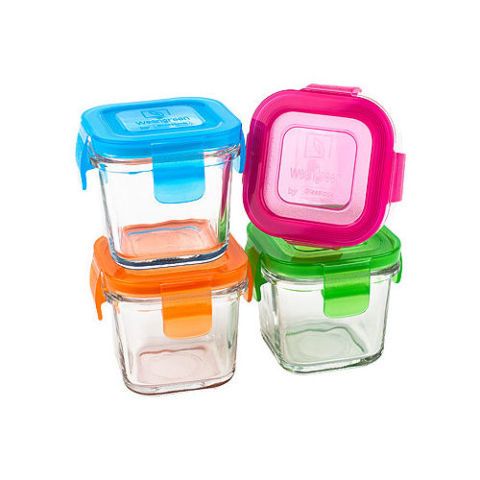
Freezing baby food with ice trays
Ice cube trays are ideal for portioning baby food. You can pour food directly into a clean ice cube tray, cover it with plastic wrap and freeze. This gives you a bunch of one ounce servings. After the cubes are frozen, you can transfer them to a more compact container, such as plastic freezer bags.
Freezing baby food in muffin tins
Muffin tins, including mini muffin tins or silicone muffin tins, work similarly to ice cube tins. Make sure the cupcake pan is clean before adding food. Once frozen, portions can be transferred to a plastic freezer bag or plastic container with a lid. Removing frozen food from a metal muffin pan can be more difficult than from a silicone or ice cube mold. Freeze baby food on waxed paper, lining the cupcake slits with paper to make it easier to remove. nine0003
Freezing baby food with plastic freezer bags
Plastic freezer bags (such as Ziploc bags), especially in gallon sizes, allow you to freeze multiple servings of baby food without taking up much space in the freezer.
If you store baby food in plastic freezer bags, label them clearly with the type of food and the date. It is not necessary to defrost the entire package at once. Just take out the portions you need and store the rest in the freezer. Make sure you squeeze out as much air as possible each time you close the bag again. nine0003
Freezing baby food with biscuit sheets
If you do not have ice cube trays, you can freeze baby food on a baking sheet. Line the sheet with waxed or parchment paper. Fill a plastic bag with puree and cut off one corner of the bag. Squeeze a bunch of puree onto a baking sheet and place it in the freezer. When they are frozen, transfer the hills to a plastic freezer bag.
Baby food freezers
You can also buy special containers designed for freezing baby food. Some of the more popular products include:
- Qubies is an inverted ice cube tray. Pour into a tray, seal with a divider lid and freeze into perfect portions.
- The Beabe Multiportion Baby Food Freezer comes in several colors, has a lid and holds seven different parts in a cute flower shape.
nine0091
- Take food straight from the freezer to the fridge or microwave in One Step Ahead's Fresh 'n Freeze 4 oz Storage Containers.
- Sage Spoonfuls Baby Food Glass Jars are made from freezer-approved glass for parents worried about the effects of freezing food in plastic.
- OXO Tot makes Freezer Baby Food Trays and Baby Blocks Freezer Storage Containers that come with lids and proper serving cups to make portioning puree easy. nine0091
Frozen baby food
Once you have frozen baby food, it is relatively easy to use when you are ready. You always need to make sure that the food is defrosted so that there is no danger of suffocation.
Defrosting frozen baby food
When it comes time to use frozen baby food, you should safely thaw it in the refrigerator, microwave or cold water. Knowing how to properly defrost frozen baby food keeps your baby safe.
The way you defrost baby food ice cubes and frozen cubed foods is the same, but thicker foods take longer to defrost. nine0003
- If you plan to use baby food for several days, you can transfer it to a jar or small plastic container with a lid and let it thaw in the refrigerator.
- Most small items thaw overnight in the refrigerator, so before going to bed, move the portions you need the next day from the freezer to the refrigerator.
- Homemade fruit and vegetable puree can be stored in the refrigerator for up to two days, so thaw it in small portions to eat later. nine0091
- Home cooked meat can only be stored in the refrigerator for one day, so if you defrost meat this way you will need to use it quickly.
- If you want to use baby food right away, you can thaw it over low heat on the stovetop by placing the food in a small, clean saucepan and stirring until it reaches the desired consistency.
- Another quick way to defrost baby food is to reheat it in a glass or ceramic dish in 15 second increments to the desired temperature and consistency, which should take no more than two minutes.
nine0091
- It is also safe to defrost frozen food in cold water, if you have food in an airtight bag, keep the water cold and change the water every thirty minutes if the food is not yet thawed.
Do not refreeze thawed baby food
Never refreeze homemade or commercial baby food after it has been thawed. Any baby food that has been thawed and has not been used within three days should be discarded for your child's safety. The only exception is if the food has not been cooked or pureed before freezing. Then it can be frozen and thawed again. nine0003
Frozen baby food precautions
When handling frozen baby food, safety should always be your priority.
- Reheat food to an internal temperature of 165 degrees for safety, then let it cool before feeding your baby.
- Avoid defrosting baby food at room temperature or in standing water, as this can encourage the growth of harmful bacteria.
- If you are using a microwave or other heat source to defrost baby food, be sure to stir it several times to get rid of the heat pockets and prevent them from burning the baby.




